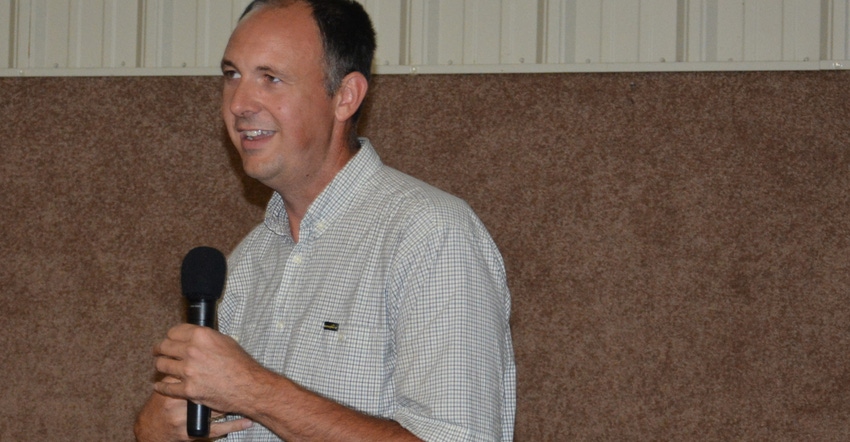
Michael Thompson lives in Norton County, Kan., and farms in Furness County, Neb., because that’s where he was able to find land when he came back to the family farm after spending 12 years as a kindergarten teacher.
“We needed to increase productivity for me to be able to come back to the farm,” he said. “Diversification and cover crops let us do that.”
He currently farms with his dad while his brother, a CPA, does the bookkeeping and helps out when he can.
Speaking to members of the Cheney Reservoir Watershed conservation group at its summer meeting at Yoder, Thompson said the time has come for a change in the way farmers think about soil and plant health.
“Learning is addictive once you get started,” Thompson said. “I used to view soil as just a medium you plant into. Once I started learning and thinking about the life and health of the soil, it brought a change of mind.”
He said one thing that’s essential to making the move toward regenerative agriculture is a thick skin.
“People will talk,” he said. “They see you doing something different from ‘the way we’ve always done it,’ and they will react. But the important thing is to accept failure as a learning experience. “Collaborate with your neighbors and help each other.”
Thompson said he has also had to accept that livestock are a part of a holistic, regenerative system.
“Growing up, I hated cattle,” he said. “But grazing animals are a part of the system. They add value to the cover crop production.”
Thompson said he went to his first No-till on the Plains conference in 2000 and made the move into no-till practices.
“I didn’t work out that well,” he said. “By 2009, we were fighting resistant weeds. I was devoted to no-till, however, and I adopted cover crops as a way to help control weeds. I planted sorghum sudan, which provided great residue but didn’t add nitrogen.
“You real need diversity in the cover crops — broadleaf plants, warm season grasses, cool season grasses. You need to stop thinking so much about what you see above ground and think more about what’s happening below ground.”
Thompson said the combination of plants can bring about a change in the soil.
“You can be a carbon miner or a carbon banker,” he said. “If you choose to be a miner, you won’t be sustainable. Carbon holds seven times its weight in water and is a central food source for microbes.
“If you don’t have plants growing and adding carbon, the microbes will feed on organic matter. We need to worry less about how much moisture we’re getting and more about how to develop a soil structure that had absorb and hold moisture. We need the moisture to go deep into the soil profile. You don’t want to pray for rain unless you have a place to put it.”
About the Author(s)
You May Also Like






